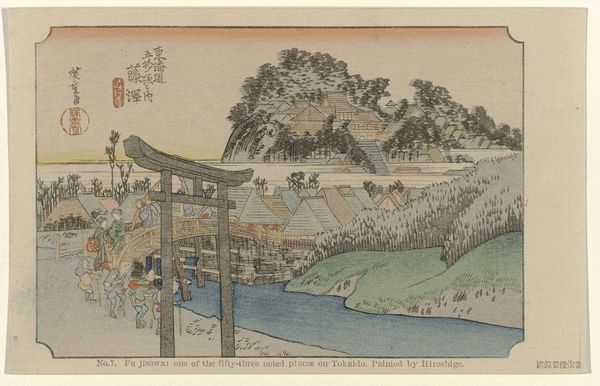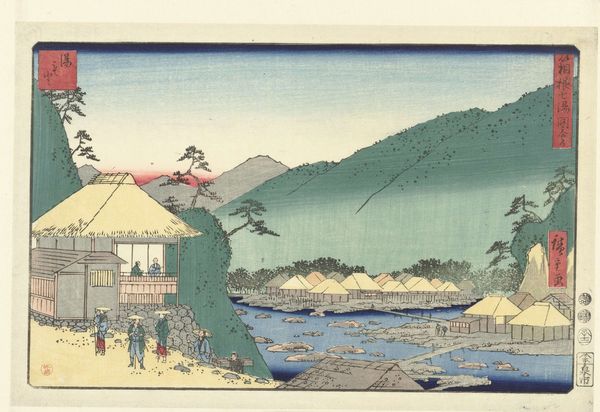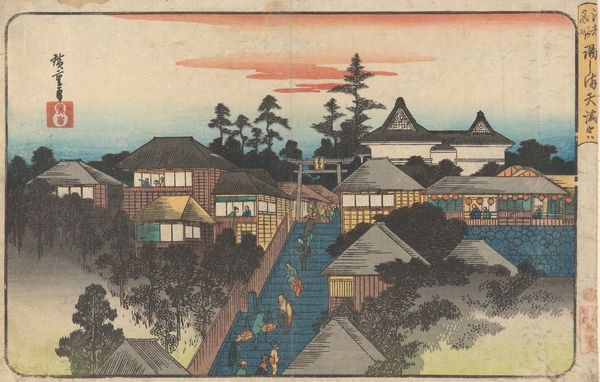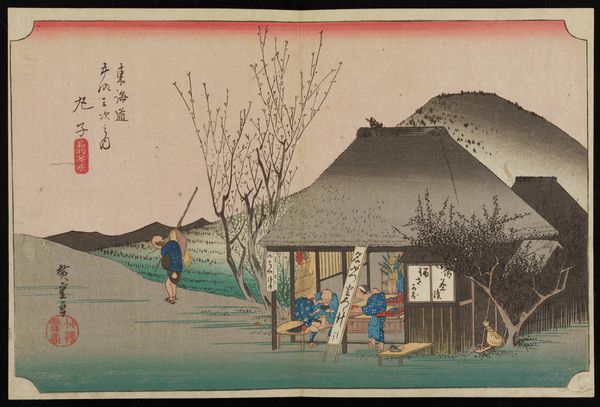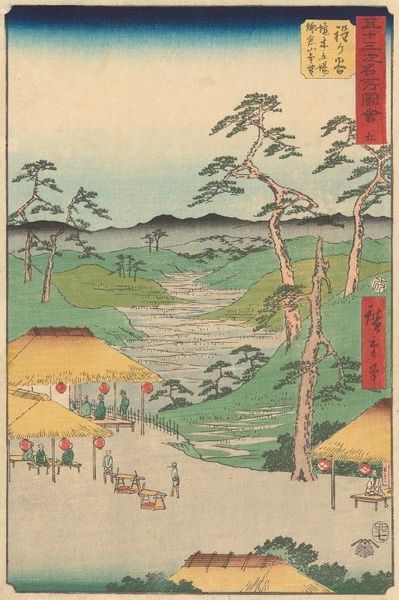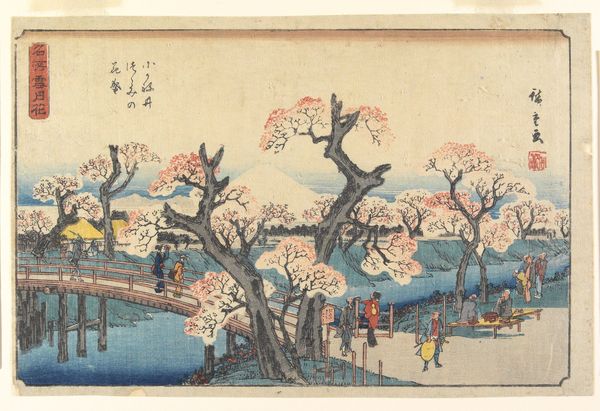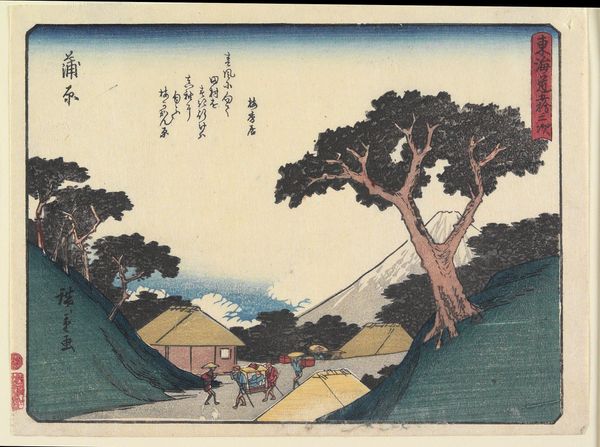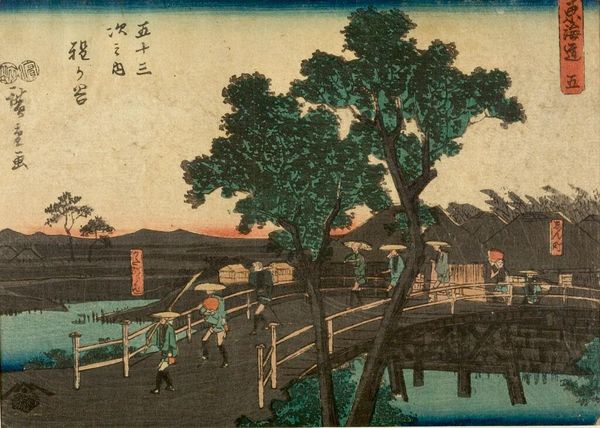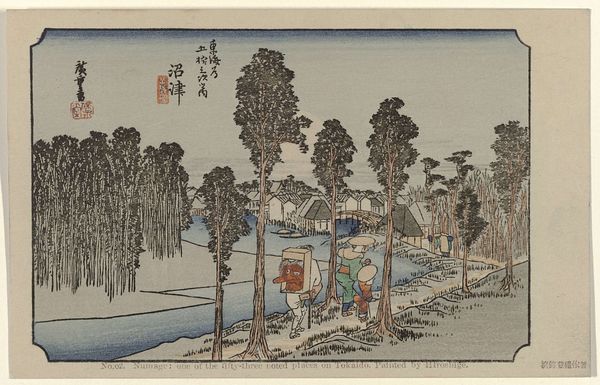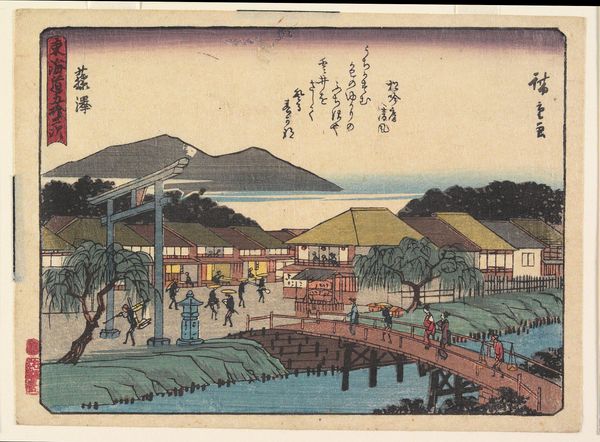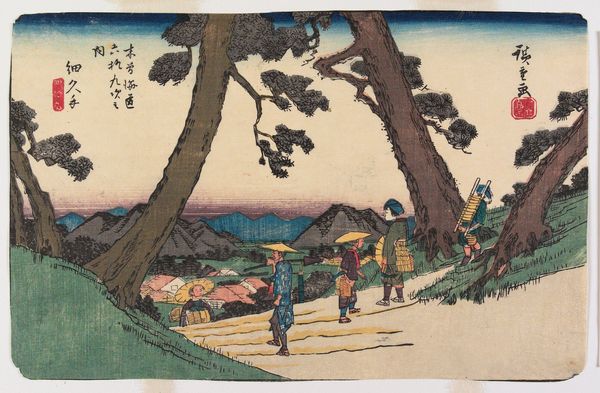
Copyright: Public Domain: Artvee
Curator: This is "Snow at Ochanomizu," a woodblock print by Kobayashi Kiyochika, created sometime between 1877 and 1882. Editor: It's remarkably tranquil. The muted tones and the gentle fall of snow evoke a feeling of quiet solitude. You almost feel the cold air. Curator: Indeed. Kiyochika was working during a fascinating period of transition in Japan. He’s considered one of the last major ukiyo-e artists, but his work also shows clear influence from Western art styles, especially Impressionism. You see it in his attention to light and atmosphere. Editor: I'm interested in the production of prints like this. Ukiyo-e wasn’t a solo affair. There’s the artist, sure, but also the block carver and printer – skilled laborers all playing crucial roles in the final product and its distribution to the public. It democratized artmaking in a really interesting way, making art accessible beyond the elite. Curator: Precisely. And the subject matter itself points to societal changes. Instead of traditional scenes of courtesans or actors, Kiyochika focuses on everyday life in a modernizing Tokyo. We see figures bundled against the cold, the Meiji-era bridge, and a sense of place that resonates with a contemporary audience experiencing rapid urban development. He depicted ordinary scenes and made them significant. Editor: Right. And let’s not forget the commercial context! These prints were commodities. The popularity of specific themes or locations informed production, and influenced subsequent work. Kiyochika responded to and helped shape the visual culture of his time. His prints were literally circulated among the population, visually educating citizens to appreciate these 'new' landscapes in Tokyo. Curator: It really underscores how art is both a product of and a reflection on its time. Even a seemingly serene image like this tells a larger story. Editor: Absolutely. Analyzing the labor, distribution, and social role makes these prints richer. I feel more connected knowing they represent collaboration, democratization and are active parts of culture. Curator: Well, examining art through those different lenses really helps us appreciate its complexity. Editor: Indeed. Looking at it in that way reveals more layers to this winter scene than just the pretty landscape.
Comments
No comments
Be the first to comment and join the conversation on the ultimate creative platform.
